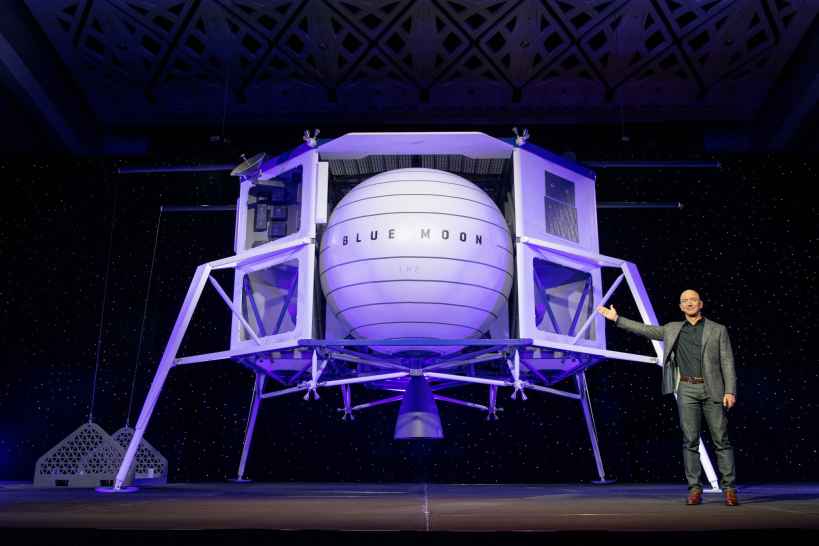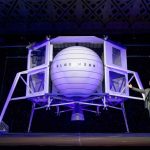Jeff Bezos’ Blue Origin wins NASA contract to build astronaut lunar lander

Jeff Bezos’ space company, Blue Origin, has won the highly-coveted NASA contract to build a spacecraft that will send astronauts to and from the moon’s surface.
In an announcement on Friday, NASA’s chief said that a team led by Blue Origin had secured a highly sought-after contract from NASA. This contract entails the construction of a spacecraft designed to transport astronauts to and from the surface of the moon, marking the culmination of a high-stakes competition.
The news comes four years after Blue Origin unveiled the company’s “Blue Moon” lunar lander to take astronauts to the moon by 2024. The space company also unveiled its new BE-7 rocket engine. In a post on Twitter, Blue Origin said: “Today, our founder shared our vision to go to space to benefit Earth. We must return to the Moon—this time to stay. We’re ready to support @NASA in getting there by 2024 with #bluemoon.”
Meanwhile, with this decision, NASA will have a second means of reaching the moon as part of its Artemis program. In 2021, NASA had previously awarded Elon Musk’s SpaceX a $3 billion contract to facilitate the historic return of astronauts to the moon, marking the first such mission since the final Apollo mission in 1972.
The scheduled missions utilizing SpaceX’s Starship system are planned to take place in the latter part of this decade.
According to Jim Free, NASA’s exploration chief, the contract awarded to Blue Origin holds an approximate value of $3.4 billion. John Couluris, Blue Origin’s lunar lander head, mentioned that Blue Origin will be making a private contribution “well north” of that amount.
In 2021, Blue Origin lost a lawsuit against NASA after the agency selected Elon Musk’s space company to build the astronaut lunar lander (HLS). NASA awarded Elon Musk’s SpaceX with a sole $2.89 billion contract to build the next crewed lunar lander under its Human Landing Systems program, beating out Bezos’ Blue Origin and Dynetics.
Those initial missions using SpaceX’s Starship system are slated for later this decade.
Following the announcement, Amazon.com founder Bezos said in a tweet:
“Honored to be on this journey with @NASA to land astronauts on the Moon — this time to stay. Together, we’ll be solving the boil-off problem and making LOX-LH2 a storable propellant combination, pushing forward the state of the art for all deep space missions.”
Honored to be on this journey with @NASA to land astronauts on the Moon — this time to stay. Together, we’ll be solving the boil-off problem and making LOX-LH2 a storable propellant combination, pushing forward the state of the art for all deep space missions. #Artemis… pic.twitter.com/Y0zDhnp1qX
— Jeff Bezos (@JeffBezos) May 19, 2023
Blue Origin also announced that it plans to collaborate with Lockheed Martin, Boeing, Draper (a spacecraft software firm), and Astrobotic (a robotics firm) in the construction of its 52-foot (16-meter) tall Blue Moon lander.
Meanwhile, under NASA’s Artemis program, SpaceX’s Starship lander has been designated for the first two astronaut moon landings. Each mission will involve sending a pair of astronauts to the lunar surface. In 2029, the Blue Moon landing is scheduled to take place, enabling the transportation of two astronauts to the moon’s surface.
“The addition of our partnership will undoubtedly contribute to the current golden age of human spaceflight,” expressed NASA administrator Bill Nelson. He further emphasized that the inclusion of a second moon lander for the agency’s Artemis mission fosters commercial competition, aligning with the cost-reducing trend observed in recent years.




